Gentlemen’s Guide: Bangkok’s 5 Best Barber Shops
These top 5 barber shops in Bangkok are where gentlemen can elevate ...
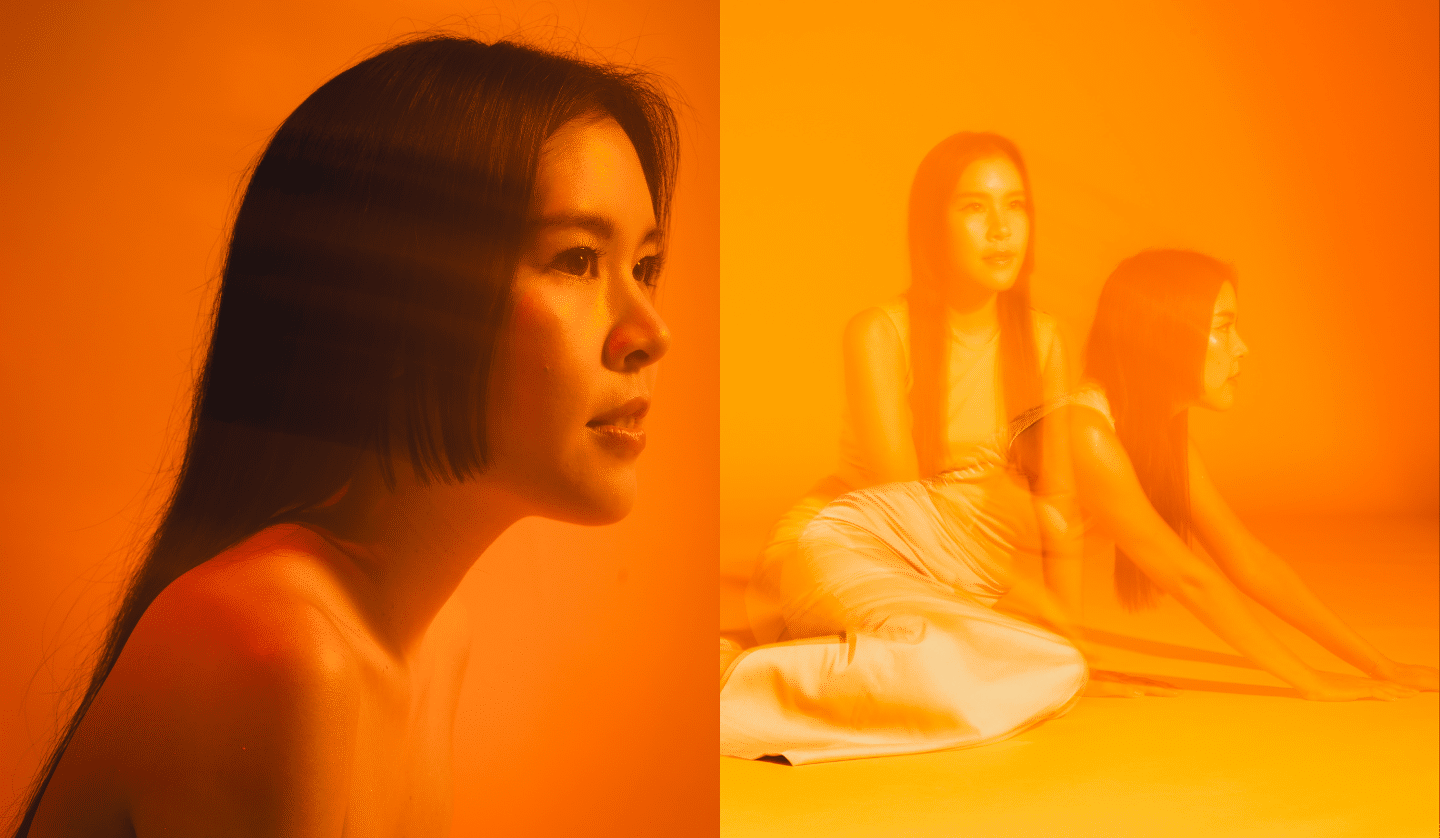
In a world full of artistic expression—where some paint, some photograph and others use their own bodies as a medium—performance art often blurs the line between movement and meaning. Some may see it as dance or theatre, but for Kawita, the body becomes a powerful tool for storytelling.
Through her art, Kawita continues to challenge perceptions, using her body to question societal norms and raise awareness of pressing issues. Koktail takes a closer look at her artistic journey and delves into how her work has evolved and the different ways she sparks meaningful conversations.
“I am a performative video artist and my art examines the systemic exploitation and transformation of human roles across industries.”
Performative video artists blur the line between video art and live performance, capturing movement, gestures and interaction in a way that transforms video from a passive recording medium into an active, expressive form. Kawita uses her body as a medium to explore and reflect on various social issues, including labour, feminism, oppression and consumerism. She explores themes that she has experienced first-hand.
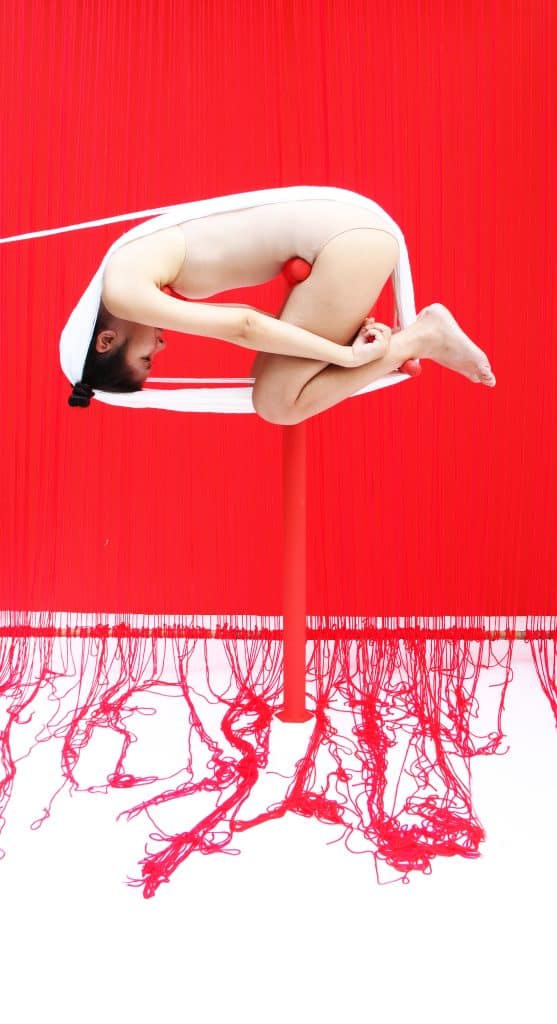
“Through my art, I seek to reveal the essence of humanity and challenge the narratives that bind us to the demands of capitalism.”
One of the key moments that shaped her artistic journey came after graduating from the Royal Melbourne Institute of Technology (RMIT) in 2011. When Kawita returned to her home country, she felt a sense of alienation from both the culture and the place she had once known.
Although she was what she describes as a “well-behaved” female, she still often felt pressured to fit into a traditional role in her own society. People would tell her that her behaviour was unconventional and didn’t always align with societal expectations, and this became the influence on her work toward feminism.
“This pressure made me feel inadequate, leading me to devalue myself by conforming to society’s approved standards and objectifying my own identity.”
Despite the pressure she faced, it only fuelled her creativity, inspiring her first series, Tools—a powerful exploration of female objectification within societal structures. For Kawita, it became a way to express the challenges and struggles of being a woman in her cultural environment.
“The deeply personal experience prompted me to question the capitalist pursuit of relentless success and its impact on our well-being.”
Her father’s death from cancer, worsened by excessive work and lack of sleep, became a catalyst for her exploration of the human condition under the themes of work and labour. She came to realise that people started to behave like machines, which made her question what it truly means to be human beyond the confines of a capitalist system, leading her to create another series The Voice of the Oppressed. While researching the project by conducting field studies and interviewing workers and farmers to hear their stories firsthand, she uncovered the hidden violence, exploitation and oppression faced by the workers. She realised that consumer behaviour plays a key role in sustaining these exploitative industries– particularly affecting female labourers by supporting unfair wages and poor working conditions. This understanding drove her to raise awareness of the issue through her art.
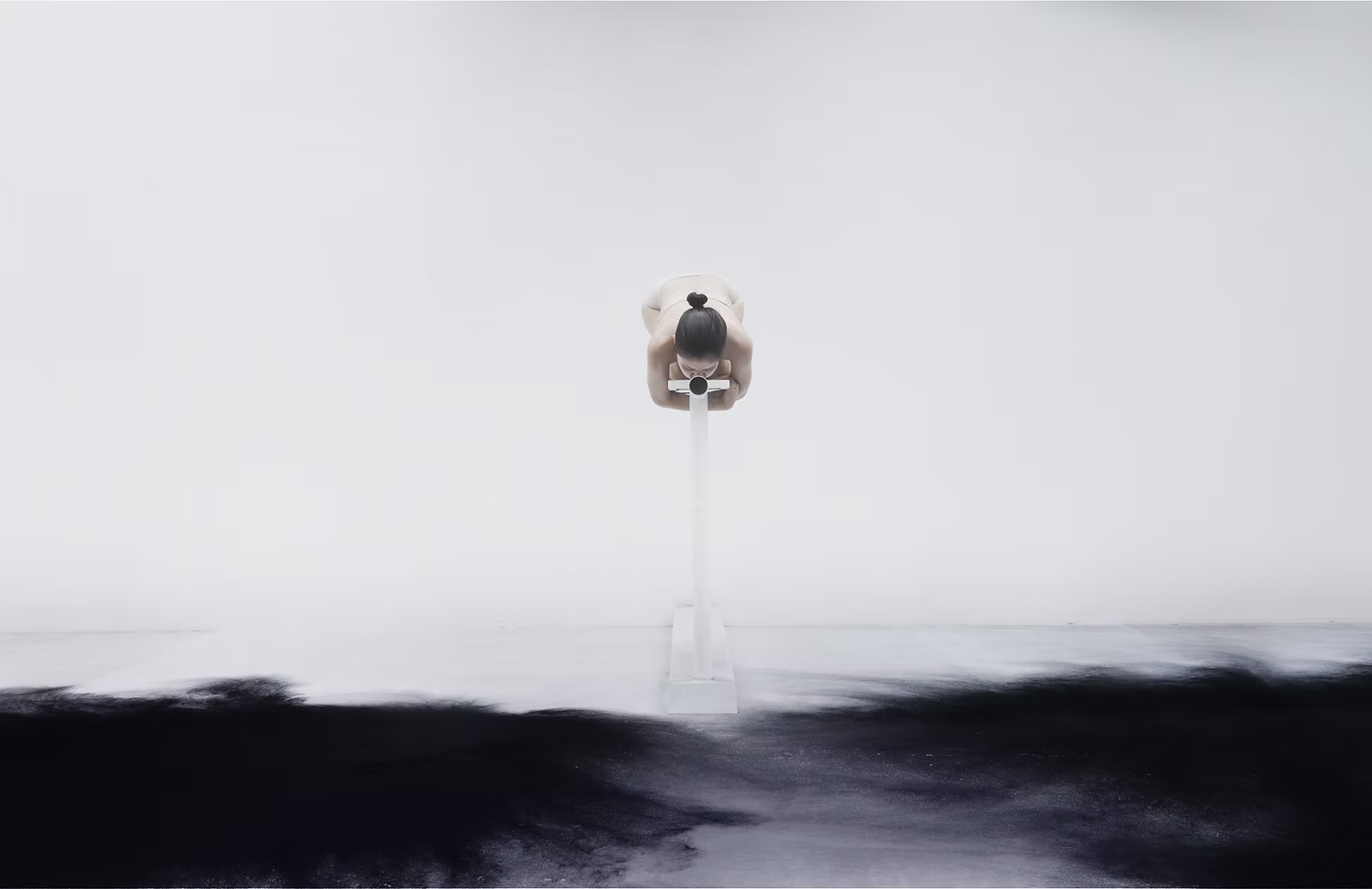
One of her favourite works which premiered at The Asia Pacific Triannial is The Machine Ghost in the Human Shell, where she used electric muscle stimulation guided by GPT-4 to control and manipulate her body. This psychological experiment explores the complex relationship between human identity and artificial intelligence (AI). Kawita questions what it means to be human in an era where intelligent machines assist and influence human thought and decision-making. As AI integrates more deeply into daily life shaping our perceptions, choices and emotions, it raises a profound question: do our bodies become mere vessels for AI-driven consciousness or synthetic ghosts? The work redefines traditional boundaries between natural and artificial, human and machine, suggesting that AI could evolve into a new form of sentient entity.
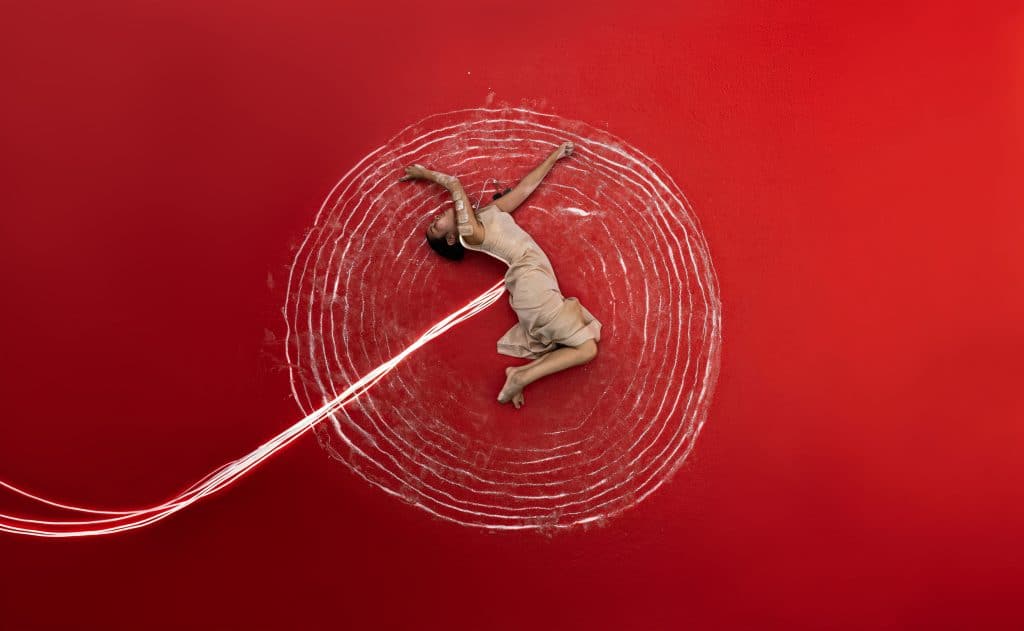
“In this work as I find myself physically controlled and puppeteered by AI, and while also experiencing its psychological manipulation, my aim is to resist its force. I strive to reclaim my sense of free will amidst the pervasive influence of the machine.”
Kawita has continued to develop a diverse range of projects, pushing the boundaries of her artistic practice. One of her significant collaborations was with Cyrus James Khan– a digital artist based in Bangkok, Thailand, on the VR work Voidscape, commissioned by Central Department Store. She was drawn to the idea that art has a greater impact when it reaches beyond traditional art spaces. It allows her to bring workers’ voices directly to consumers. Working with Khan also expanded her imagination and creativity through his use of innovative technology and immersive storytelling. Kawita has showcased her work at major events, including the Bangkok Art Biennale 2022, where her piece The Scale of Injustice was displayed at BACC.

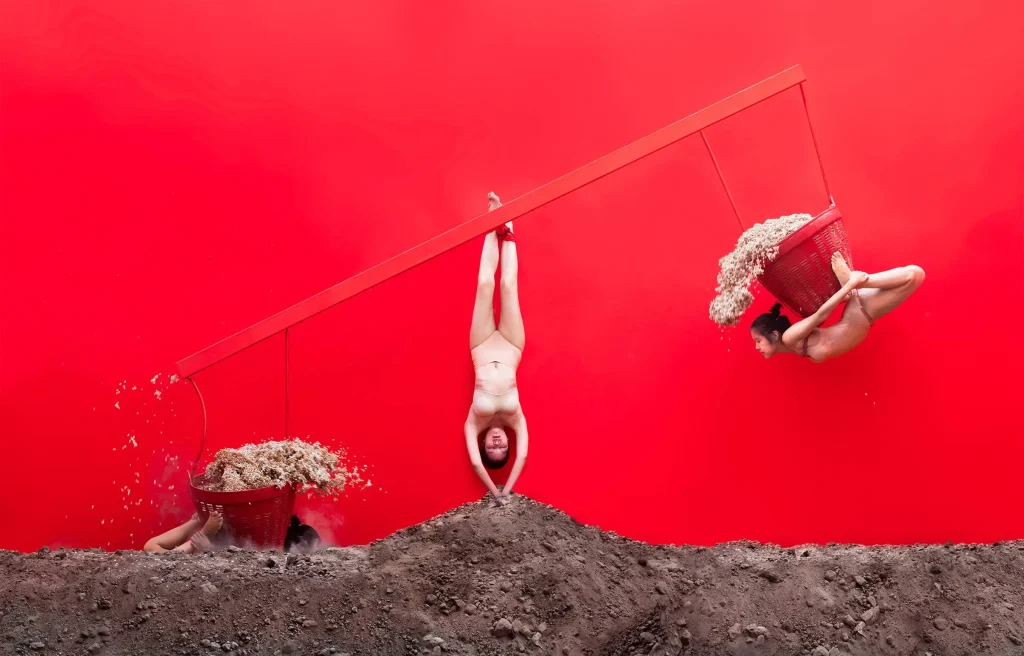
At the end of this year in Shanghai, Kawita will showcase Cyber Labour, an ongoing collaborative project with Pat Pataranutaporn, an AI researcher at MIT Media Lab. This series explores the intersection of technology and labour, examining how artificial intelligence and digital advancements are reshaping the future of work and human experience. Through various experiments and symbolic representations, Kawita continues to delve deeper into these themes, highlighting the evolving relationship between technology and labour.
Another upcoming project, New Frontier, will centre around the consequences of human and environmental exploitation from chemicals and pollution that contribute to biological and ecological mutations. The project is inspired by an American writer, Donna Haraway’s influential works, A Cyborg Manifesto and The Companion Species Manifesto. By exploring the connections between humans, machines and other life forms including animals, she aims to reshape traditional ideas of what it means to be human. This series looks at how identities can blend and evolve both physically and mentally, reflecting Haraway’s vision of a world where the lines between species and technology are blurred.
For Kawita art is movement, storytelling and a powerful means of expression. Her work challenges perceptions, encouraging audiences to reflect on humanity and question societal norms. By using her body as a medium, she pushes boundaries and inspires others to step forward, shedding light on issues often overlooked.
“To young artists using their bodies as a storytelling medium: follow your heart and passion. Trust in your beliefs and let them guide your creative journey. Your body is a powerful tool for expressing stories and emotions.
Develop a strong visual language rooted in your philosophy to inspire and change minds. Believe in yourself and your vision. Prove daily that your work matters with focus, passion and discipline. Embrace challenges and let them shape your art. Create work that dares to ask new questions, push boundaries and spark curiosity. Challenge conventions and provoke thought to engage your audience in meaningful dialogue.”
These top 5 barber shops in Bangkok are where gentlemen can elevate ...
Pets, as cherished members of our families, deserve rights and protections that ...
Wandering around the globe, try out the signature tastes of cultures across ...
Sailorr and Molly Santana’s black grills fuse hip-hop swagger with homage to ...
Oooh, Pantone just dropped their 2026 Colour of the Year and it’s ...
Pattaraporn “Nat” Salirathavibhaga’s HOMELAND supports farmers through conscious purchasing and bringing agriculture ...
Wee use cookies to deliver your best experience on our website. By using our website, you consent to our cookies in accordance with our cookies policy and privacy policy